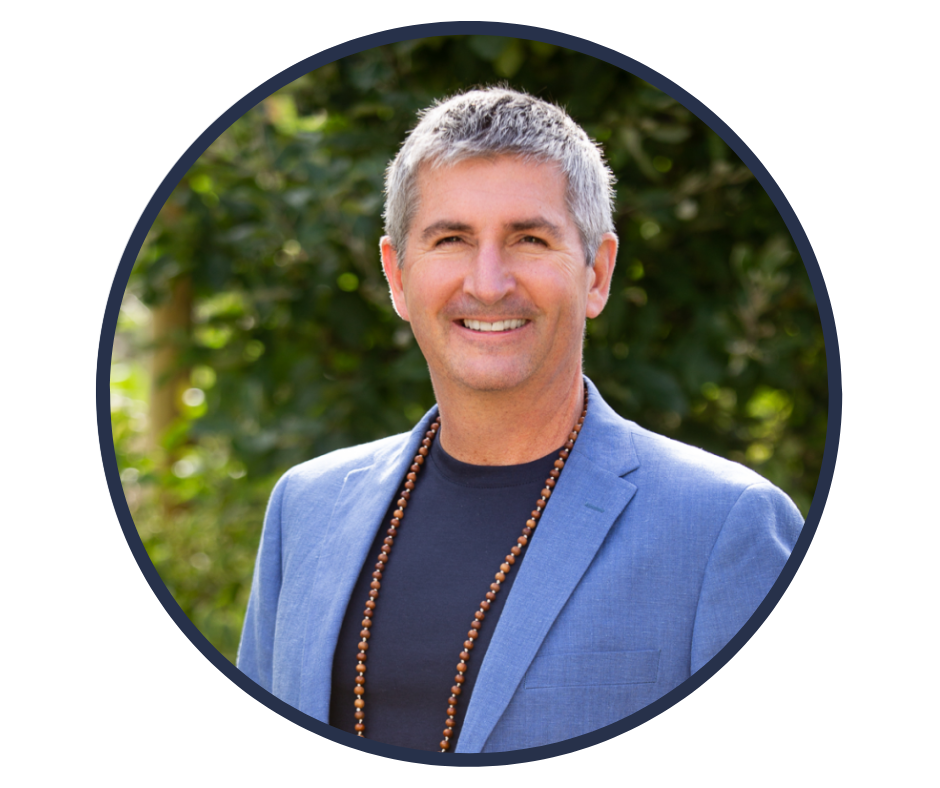Yoga and Science in Pain Care - Does Knowledge about Pain Biology Help with Pain Management?
By: Vidhya Gopalakrishnan, Ph.D., C-IAYT, RYT500 ∙ Estimated reading time: 10 minutes
By: Vidhya Gopalakrishnan, Ph.D., C-IAYT, RYT500 ∙ Estimated reading time: 10 minutes

This is the 5th blog post in a series based on the Yoga and Science in Pain Care Book Club, a 15-part course based on the book by the same title, by Neil Pearson, Shelly Prosko, and Marlysa Sullivan. You can find the blogs corresponding to Chapter 1, Chapter 2, Chapter 3, and Chapter 4.
Introduction
If we took a poll to find out how many people have never experienced some form of pain, I guess that the answer would be an extremely small number or even zero. To my knowledge, pain is quite ubiquitous. Secondly, pain is complex, and it is also a very subjective experience. There are no objective pain tests or measures like blood pressure for hypertension or glucose monitoring and HbA1C measurements for diabetes.
‘Pain is a conscious experience that is associated with multiple and widespread physiological changes including effects in the brain’.
The International Association for the Study of Pain (IASP) defines pain as not only sensory but both sensory and emotional. It thus depends on inputs from inside the body, such as one’s own felt experience, as well as what's happening in the person’s environment. Additionally, it is also affected by factors like memories, emotions, and thoughts.
Pain is, therefore, seen as a multi-factorial experience that is based on a confluence of several different events. Thus, no two people with a common pain complaint such as persistent back pain or knee pain experience their pain or respond to a standard of care treatment in the same way.
So how do we work our way around this complex web of persistent pain and offer relief?
According to the author, Neil Pearson, of the chapter entitled “Pain Biology and Sensitization", in the book, “Yoga and Science in Pain Care”, ‘pain is best understood from multiple perspectives’. The neurobiology of pain is one such perspective and is the focus of this chapter and the companion course on Embodia. Please refer to the book here and the Embodia course here to learn more about pain biology and the other perspectives for helping a person deal with and manage their pain.
The chapter provides a comprehensive overview of key physiological components and processes involved in pain: peripheral neurons, inflammation, neuropathic pain, the dorsal horn, inhibitory neurons, microglia, neurotransmitters, and ascending/descending brain pathways. Pearson has done an amazing job summarizing the neurobiology of pain and the diversity of systems and pathways that are involved in the experience of persistent pain.
Questions such as “How do I care about pain biology when I am in so much pain” or “How does knowledge about pain biology help me deal with my chronic pain” may arise in our minds as they did in mine. Please read on to get Pearson’s views on this topic.
Why Pain Biology?
Some of Pearson’s goals for getting into this complex topic are to:
- Summarize the vast field of scientific research.
- Demonstrate the realness of pain and how/why it persists.
- Challenge the paradigm that pain is either entirely related to the presence/extent of tissue injury or it is all in the head.
- Show how the practices of yoga can help a person living in pain.
- Most importantly, to provide hope to treaters, therapists, and patients by showing “that pain, like all human experiences, is impermanent and that we are resilient”.
He then goes on to provide additional details about pain such as pain types and its effects, its anatomy and physiology, its influence on other systems, and a proposed framework for understanding and managing pain.
Pain Types and Effects
There are different types of pain such as:
- Nociceptive pain, which is in response to nociceptive stimuli such as temperature, mechanical pressure, or chemical change.
- Neuropathic pain, which is in response to nerve damage.
- Sensitization, which is an increased sensitivity to pain due to a decreased pain resistance threshold.
Pain’s effects can be direct or indirect. Direct effects are those elicited in response to an injury. The indirect effects of pain are multifaceted and multidimensional and can include effects such as:
- Allodynia (tactile, thermal, etc.)
- Distortions of body image, awareness, and body schema
- Hyperalgesia
- Diminished cognitive ability and impact on autonomic processes
- Impact on emotional and social health
The importance of all these definitions and classifications is to help with effective pain management. Please refer to the chapter for additional details.
Anatomy and Physiology of Pain
As mentioned earlier, pain is a subjective experience that arises out of a complex conglomeration of sensory input, emotions, memory, and what's happening in the current moment.
Thus, the physiological and anatomical aspects of pain are complex. Multiple systems including but not limited to peripheral neurons, the spinal cord, dorsal horn, inhibitory neurons, microglia, macrophages, neurotransmitters, the ANS, ascending and descending pathways, inflammation and neuropathic pain, the brain, specific brain areas and networks, sensory perception, emotions, interoception, cognition, physical movement, and stress response systems are involved. It is as if no part of our body wants to miss out on the pain experience!
So how is pain produced, transmitted, and registered?
Nociception, Pain Transmission, Brain, and Pain
According to pain biology, there are sensory receptors in our skin called nociceptors that pick up noxious stimuli such as heat/temperature (e.g., body coming in contact with fire such as a candle flame), or mechanical pressure (e.g., stubbing a toe). This information, detected as a temperature or pressure change, goes through our nervous system as a potentially harmful stimulus which is interpreted by the brain as pain, followed by the creation of a response.
Potentially harmful/painful stimulus (nociceptive information) can travel up the nervous system through ascending nociceptive pathways that go from the periphery to the brain including transmission through the dorsal root of the spinal cord, the actual spinal cord, up into the brain, and through the brain to the thalamus, cingulate cortex, and to the somatosensory cortex, where sensations such as a candle burn are registered on a specific body part (such as fingers or hand). Please refer to Figure 5.1 in the chapter for the relay system by which a noxious stimulus reaches the brain that is then experienced as pain.
 Fig 5.1: Pearson N. (2019). Pain Biology and Sensitization. In: Pearson N, Prosko S, Sullivan M. (Eds). Yoga and Science in Pain Care: Treating the Person in Pain. London, UK: Singing Dragon Publishers; p 88.
Fig 5.1: Pearson N. (2019). Pain Biology and Sensitization. In: Pearson N, Prosko S, Sullivan M. (Eds). Yoga and Science in Pain Care: Treating the Person in Pain. London, UK: Singing Dragon Publishers; p 88.
Like the ascending networks, there are descending networks in the nervous system. Information is transmitted from the somatosensory cortex, through the forebrain like the frontal cortex, the thalamus, the hypothalamus, and the amygdala to the periaqueductal gray, to the raphe nuclei, the dorsal horn, and then back into the creation of an action response.
Pain is produced by the brain, and it is where the brain tells us it is. However, there is no pain center in the brain nor are there things such as ‘pain nerves’ or ‘pain pathways’ that transmit pain. Brain networks and pathways associated with pain production overlap with other brain networks or pathways involved in other functions. That is why certain movements, memories, smells or sights, and other such associations can influence pain.
Complexity of Pain and the Pain Network: How Yoga Fits In
In addition to nociceptors, neurons, spinal cord, and brain, pain influences and is influenced by other physiological systems such as the ANS and CNS, the endocrine, motor, and immune systems. For example, everything that is happening inside and outside our body including cognitive and emotional processes influences both the CNS and ANS.
Our sympathetic nervous system will activate in response to pain to mobilize resources for protection and survival. Our motor system may activate by tensing up certain muscles for us to take action or our endocrine system may activate and trigger fluctuations in hormonal levels in response to pain.
A framework for understanding this complex system of pain generation, propagation, and manifestation, that explains the lived experience of pain, was proposed by Melzack and Wall and is summarized in Figure 5.6 of the chapter.

Fig 5.6: Pearson N. (2019). Pain Biology and Sensitization. In: Pearson N, Prosko S, Sullivan M. (Eds). Yoga and Science in Pain Care: Treating the Person in Pain. London, UK: Singing Dragon Publishers; p 102.
According to this model, called the “Body-Self Neuromatrix”, pain is an integral composite of not only sensory inputs but also inputs related to cognition, emotions, voluntary and involuntary activity, and stress factors.
The outputs in response to these inputs are pain manifestation in multiple dimensions, involuntary and voluntary action patterns, and altered stress regulating systems. This model provides support for the biopsychosocial and Panchamaya kosha view of pain and suggests that we can use the tools of yoga therapy to impact any or all of these inputs and outputs to help people in pain.

The peripheral nociceptive neurons, which Pearson explains are of three types, A-delta fibers, A beta fibers, and C fibers (classified based on their myelination level and conduction velocity), are constantly changing in response to the neurons' and the person's internal and external environment and situation (plasticity).
This leads to an adaptable and changing pain response to a given noxious stimulus. This same adaptability provides the opportunity for pain management such as with yoga therapy tools.
Thus, with knowledge of pain biology and the neuromatrix framework, one can design effective pain management strategies to influence pain by changing:
- What is going on with nociceptors,
- The way signals are going up to or down from the brain via the ascending and descending pathways,
- Brain processes involved in the analysis of the incoming signals, and
- The conceptualization of pain and its reconceptualization through pain education.
Most importantly, it drives home the point that pain is real (because of these documented changes to our physiology and anatomy) and at the same time ‘not immutable’.
Personal Insights
A very important question posed by Pearson in one of the course modules, “Do we need to have no pain to live well? followed by his comment “As yoga therapists this is something important to think about” deeply resonated with me personally and professionally.
As someone who has dealt with persistent pain and is regularly hearing from otherwise healthy yoga therapy clients about back pain, hip pain, or some other form of pain, the notion that pain is ubiquitous and that the concept of ‘pain-free’ is a pipe dream, was something I had begun to accept as reality. Thus, Pearson’s question above and the perspective he shared were very revealing to me.

Another key insight for me was Pearson’s classification of people in pain post-intervention. He groups them into three categories:
- Those who report that their pain is mostly gone.
- Those who report that their pain is better than before but know what they need to do to influence it and work around it.
- Those who report that their pain has not changed at all but have managed to get their lives back (likely due to reframing).
According to him, the majority of pain experiencers fall into the second category. This proves the point that being pain-free is not or does not have to be the end result. Knowledge and awareness of how to influence and manage pain to not impact one’s quality of life is the important outcome of pain therapy. It was also encouraging to note that there is a percentage of people who lead a normal life despite their unchanged pain (group 3).
Learning and digesting the fact that one can live well and flourish despite a background white noise of pain was extremely empowering for me both as a pain experiencer and a yoga therapist. It helped me reframe my relationship with pain and my definition of pain management from one focused on trying to get back to where I was before the distressing situation to one based on balancing acceptance with problem-solving and moving forward to a new normal.
In summary, knowledge of pain biology offers hope and optimism that any or all the changes that happen to the nervous system, brain, and other physiological systems due to persistent pain are not permanent and can be changed back even if it is not fast or completely reversed.
Pain biology offers multiple entry points/avenues to work on pain but the humbling aspect, as yoga therapists, is that we may not know which portal is the most accessible or effective for a person in pain. Thus, pain management is not about a one-size-fits-all approach to mitigate pain but rather an incremental titration approach of doing some management, learning to live better, doing the next mitigation step, learning to live a little better, and so on. Recovery may therefore be non-linear with ups and downs trending, nevertheless, in the direction of getting one’s life back and living better.
Click here to learn more about Chapter 5
of Yoga and Science in Pain Care
or
Click here to view the complete series
References
- Pearson, N., Prosko, S., Sullivan, M. (2019) Yoga and Science in Pain Care: Treating the Person in Pain: Jessica Kingsley Publishers
- Chapter 5 Online Course Pain Biology and Sensitization. https://embodiaapp.com/courses/859
- International Association for the Study of Pain (2017) “Terminology”
---
Date published: 03 April 2024
Last update: 08 December 2025

PhD, RYT-500, C-IAYT
Vidhya Gopalakrishnan is an executive in the pharmaceutical industry with more than 25 years of experience in research and development, program management, and leadership. A student and practitioner of yoga for more than 15 years, she holds a Master of Science in Yoga Therapy. She is passionate about a holistic approach to health and wellness and tries to integrate her scientific training and pharmaceutical development experience into her yoga therapy teachings. In addition to private sessions, she has taught workshops focused on yoga therapy for menopause management, endocrine and cardiovascular health, and pain.
Dr. Gopalakrishnan received her doctorate in Bio-Organic Chemistry from the National Chemical Laboratory, Pune, India, and an additional master’s degree in chemistry from IIT, Madras. She has held postdoctoral positions at Penn State University and Stanford University School of Medicine. She serves as a member of the Accreditation Committee at IAYT and a board member for EkaShri Schools of Yoga.

MPT, C-IAYT
Marlysa is a physiotherapist and yoga therapist with over 15 years of experience working with people suffering with chronic pain conditions. She is an Assistant Professor in Yoga Therapy and Integrative Health Sciences at Maryland University of Integrative Health and holds an adjunct position at Emory University, where she teaches the integration of yoga and mindfulness into physical therapy practice in the DPT program. She is also the author of Understanding Yoga Therapy: Applied Philosophy and Science for Well-being and co-editor of Yoga and Science in Pain Care: Treating the Person in Pain as well as several peer-reviewed articles.
Marlysa has been involved in the professionalization of the field of yoga therapy through the educational standards committee of IAYT, which helped to define the competencies for the field, and in characterizing the yoga therapy workforce through research. Her research interests focus on defining the framework and explanatory model for yoga therapy based on philosophical and neurophysiological perspectives.

PT, C-IAYT, PCAYT
Shelly has been helping people recover and flourish since 1998 as a physiotherapist, yoga therapist, educator, author and pioneer of PhysioYoga, blending evidence-informed body-mind-breath-spirit-heart centered practices and principles, such as yoga, into physiotherapy with a focus on chronic pain, pelvic health, compassion in healthcare and professional burnout. She is on faculty at several therapy programs, presents at medical conferences globally, contributes to academic research and writing, provides classes, courses and resources for the general population, and offers continuing education courses and mentorship for professionals.
She considers herself a lifelong student and emphasizes the immense value gained from clinical experience and learning from those she serves, the professionals she teaches, and the colleagues with which she collaborates.
Shelly is the co-editor/author of the book Yoga and Science in Pain Care: Treating the Person in Pain and has authored numerous book chapters in a variety of rehabilitation textbooks.
She maintains a clinical practice in Sylvan Lake, Alberta and believes compassion (including self-compassion), meaningful connections, spending time in nature and sharing joy are powerful contributors to rehab and well-being.
Visit www.PhysioYoga.ca to learn more.

PT, MSc(RHBS), BA-BPHE, C-IAYT, ERYT500
Neil is a physical therapist, yoga therapist, author, researcher, Clinical Associate Professor at the University of British Columbia, faculty in three IAYT-accredited yoga therapy programs, board member for the International Association of Yoga Therapists and pain care advocate. He conducts research into the effects of yoga on veterans with chronic pain and people with osteoarthritis. Neil is the recipient of awards honouring his work in pain care, patient education and physiotherapy by Queen’s University, the Canadian Pain Society and both provincial and national physiotherapy associations, including the Canadian 2021 Medal of Distinction.
Neil is a consultant to Partners in Canadian Veterans Rehabilitation Services, and to Lifemark’s 300+ clinics in Canada. Neil is a past board member for Pain BC, Canada’s premier non-profit transforming the way pain is understood and treated. He co-authored – Yoga and Science in Pain Care 2019, authored the patient education ebook, Understand Pain Live Well Again in 2008, and is lead contributor to many free patient resources offer by Pain BC.
For more information and course offerings, see www.paincareaware.com